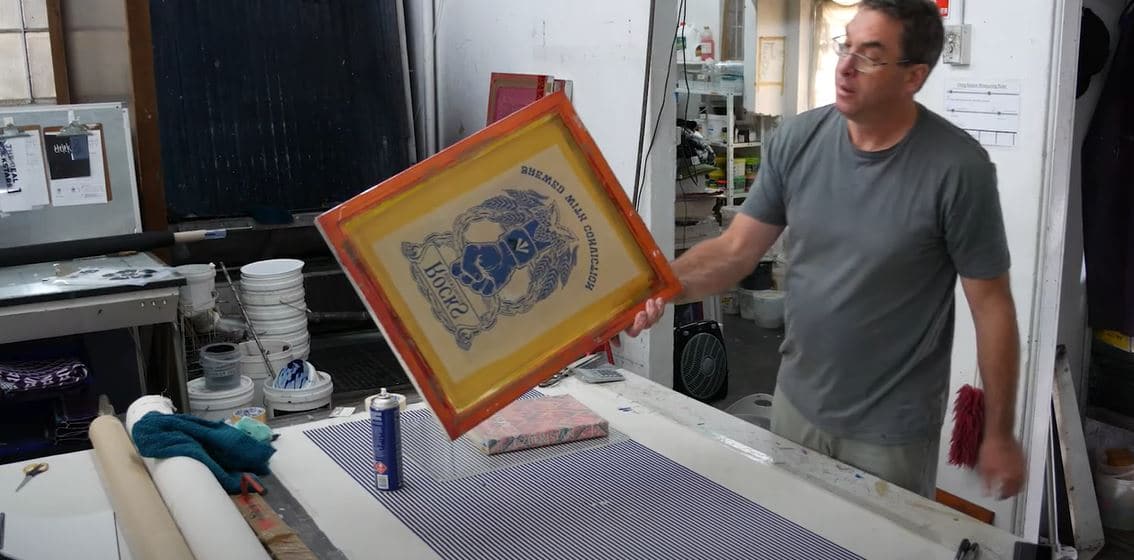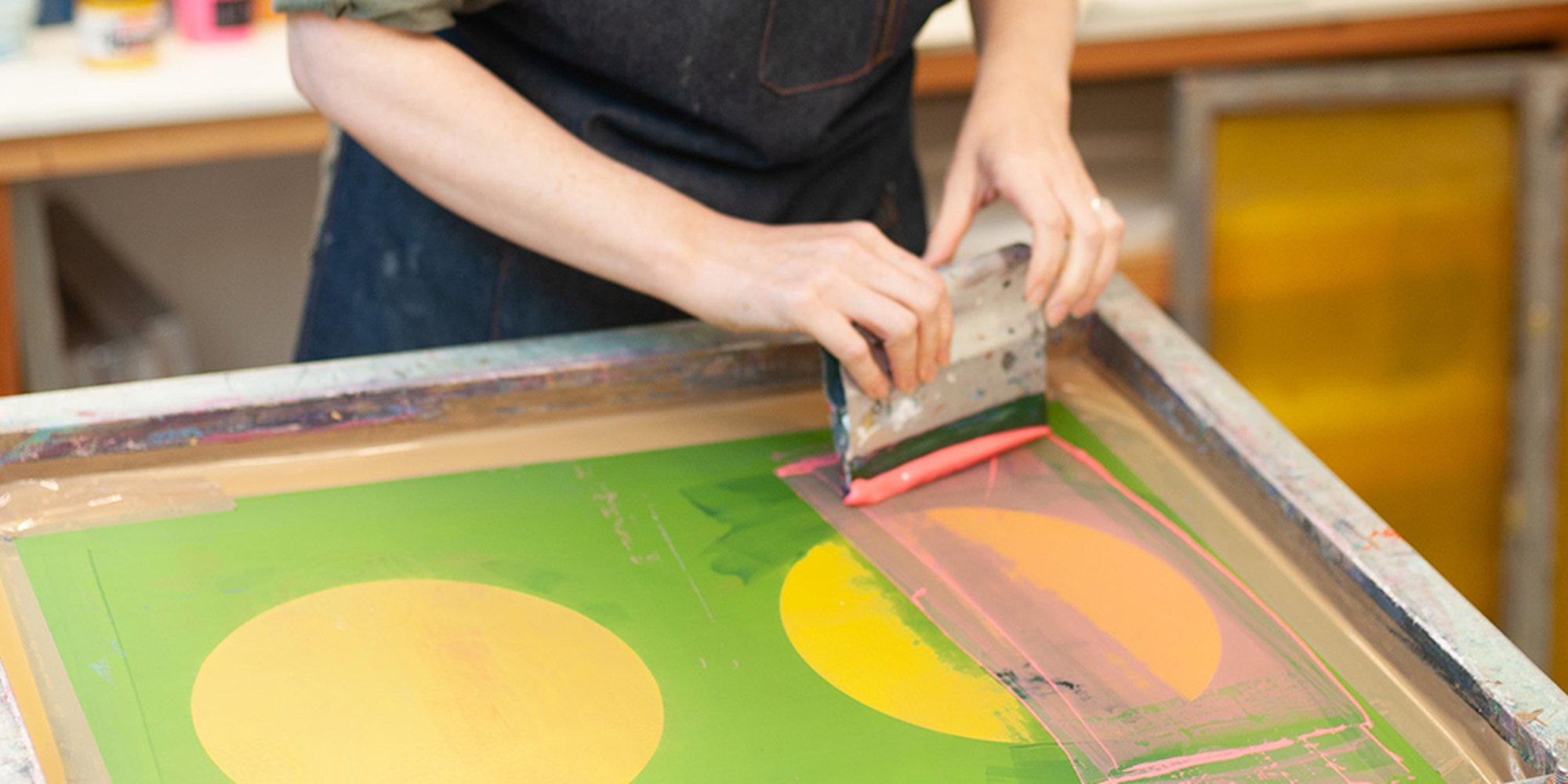The Vital Overview to Recognizing Screen Printing and Its Versatile Makes use of
Screen printing has an abundant history that goes back to old times, advancing into a sophisticated technique utilized throughout numerous industries today. This overview checks out the details of the screen printing procedure, describing its applications in advertising, style, and home style - 10:9 Design Screen Printing Texas. Recognizing these basics can open up imaginative potential for both artistic and commercial jobs. The following areas will expose important pointers and methods to improve one's screen printing endeavors
The History of Screen Printing
Although screen printing has roots that map back centuries, its development reflects the technological and creative innovations of numerous societies. Stemming in ancient China, the method was originally made use of for enhancing textiles and later infect Japan, where it came to be essential to Ukiyo-e woodblock printing. The approach shifted to Europe in the 18th century, where it gained appeal among artisans and commercial printers. The creation of picture emulsion in the 20th century transformed screen printing, permitting for even more intricate designs and higher effectiveness. Artists like Andy Warhol further propelled its popularity, utilizing the medium to develop famous jobs that mixed commercialism and fine art. By the late 20th century, screen printing had established itself as a functional method, employed in vogue, advertising, and great art. Today, it remains to progress, integrating digital innovation and broadening its applications throughout various sectors.
The Screen Printing Process Explained
Screen printing changes creative visions right into substantial styles via a collection of accurate actions. Originally, an image is created and after that transferred onto a screen, commonly made of fine mesh fabric stretched over a framework. A light-sensitive solution is applied to the screen, which is subjected to light, hardening in areas not covered by the picture. After cleaning out the unhardened solution, a pattern is formed.
Next, the screen is positioned over the substrate, whether it be fabric, paper, or one more product. Ink is after that pressed through the open areas of the pattern using a squeegee, transferring the style onto the substrate listed below. This process can be duplicated for several shades, calling for separate displays for each color. The published product is cured using warmth to assure the ink adheres effectively, resulting in a sturdy, lively layout all set for usage.
Kinds of Screen Printing Techniques

In addition, specialized methods, such as discharge screen printing, remove dye from the textile to develop softer prints, while aluminum foil screen printing applies metal aluminum foil to achieve a shiny finish (10:9 Design Screen Printing Texas). Each strategy offers distinctive characteristics, satisfying numerous creative requirements and manufacturing scales, inevitably expanding the opportunities within the screen printing domain
Applications of Screen Printing in Numerous Industries

Furthermore, the signage and advertising sectors make use of screen printing for producing eye-catching displays and banners. This approach enables bold shades and intricate designs that record attention. In electronic devices, screen printing is employed for using conductive inks to circuit card, important for component links. Moreover, the home decoration industry welcomes screen printing to produce distinctive layouts on fabrics and wall art. On the whole, screen printing functions as a vital tool throughout varied fields, enhancing items with individualized and aesthetically attractive graphics.
Tips for Successful Screen Printing Projects
While taking on a screen printing task, mindful focus to information can substantially boost the final result. Choosing high-grade products is essential; this includes the screen, inks, and substratums. Utilizing ideal mesh matters can affect ink deposition and information resolution. Prep work is just as vital; thorough cleansing of displays and correct direct exposure times ensure crisp prints.
Next, precise registration is important for multi-color prints. Using positioning devices can aid attain precise layering. Furthermore, testing prints on scrap materials before production assists determine potential issues without squandering sources.

Often Asked Questions
What Materials Are Best for Screen Printing on Fabric?
Cotton and polyester blends are optimal for screen printing on material because of their resilience and ink absorption. In addition, specialty textiles like silk or canvas can produce unique appearances and surfaces, improving the overall style top quality.
How Do I Tidy and Maintain Screen Printing Tools?
To keep and cleanse screen printing devices, one must routinely wash displays with ideal solvents, check squeegees for wear, lubricate relocating components, and shop all items in a dry, dust-free setting to prolong their life-span.
What Are the Ecological Influences of Screen Printing?
Screen printing can have considerable environmental effects, consisting of chemical waste from solvents and inks, water usage throughout cleansing procedures, and power consumption. Lasting practices and eco-friendly products are essential for lessening these negative results.
Can Screen Printing Be Done in the house Effectively?
Screen printing can be properly done at home with the best products and techniques. Hobbyists can create top quality prints, though success depends on their ability degree, devices, check out this site and understanding of the procedure included.
What Are the Expenses Connected With Beginning a Display Printing Organization?

Starting a screen printing service involves prices for tools, click for more info products, and work space. Initial costs commonly vary from a few hundred to several thousand dollars, depending upon the scale, quality of equipment, and wanted manufacturing ability.
Screen printing has an abundant history that dates back to ancient times, evolving right into a sophisticated method utilized across different sectors today. One more technique, rotating screen printing, employs cylindrical screens, assisting in continual printing on fabric rolls, thereby boosting efficiency for massive productions. Furthermore, specialty strategies, such as discharge screen printing, eliminate color from the textile to develop softer prints, while aluminum foil screen printing uses metal aluminum foil to achieve a glossy surface. In the style industry, screen printing is extensively made use of to develop vivid designs on clothing, making it possible for brands to display their unique designs. Cotton and polyester blends are optimal for great site screen printing on material due to their sturdiness and ink absorption.